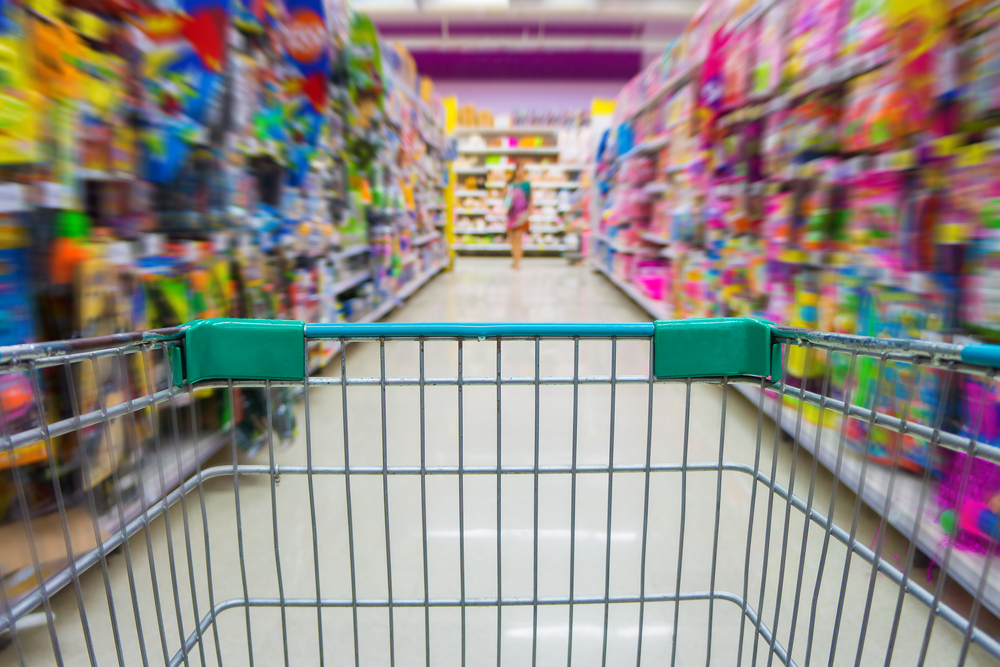In North America, it can sometimes feel like there’s some kind of dollar store on every block. Whether it’s a Dollar Tree, Dollar General, Family Dollar, or otherwise – they’re everywhere. Beyond the environmental issues of buying cheap, throwaway goods, new research shows that many items in dollar stores are full of potentially toxic chemicals. Think about this before the next time you decide to “just grab it at the dollar store”.
Dollar Stores Full of Toxic Chemical-Containing Products

It doesn’t take a lot to notice the low quality of products that you find in your average dollar store. Walk through the door, and the heavy scent of cheap plastic immediately hits you. While no one expects to buy top-quality products from dollar stores, one thing most do expect is that, at the very least, those products won’t pose a health threat. Unfortunately, according to recent reports, even that is too high a standard. A new report from the Campaign for Healthier Solutions found that more than half of 226 dollar store products tested in both United States and Canadian stores contain questionable chemicals. (1)
Read More: How Does Vitamin A Toxicity Impact The Liver
Which Chemicals and Which Products?

The report, titled Toxic Chemicals in Dollar Store Products: 2022 Report, found chemicals such as lead, mercury, arsenic, and phthalates, to name just a few, in the tested products. These chemicals are known to present a risk to human health. What’s worse, many of the products were ones meant for children.
The researchers tested a pair of wireless headphones meant for children. They found the item contained lead solder, flame retardants, and phthalate plasticizers. Each of these chemicals has been linked to an increased risk of childhood cancers, and all three were in the same product. (2) They found other products made of polyvinyl chloride (PVC) that are known to contain endocrine-disrupting chemicals. Bisphenol S was present in 100% of the stores’ paper receipts, and they found PFAS in food packaging and cookware products. PFAS are also known as “forever” chemicals that persist and accumulate over time in both the environment and the human body. (3)
It’s Not Just About Consumers

Of course, there is a major concern among consumers about this news. After all, many of them are purchasing toys and other products for their children or for cookware and food storage items they will use for their whole family. Some of these products, however, consumers will have very little contact with. For example, the receipts. You may touch that receipt once or twice when you purchase something from a dollar store. The cashiers, however, may touch receipts 400 to 500 times daily. On top of that, they are in those stores for hours each day, handling and being around the products they sell.
Read More: Is Dawn Dish Soap Toxic? Here’s How To Spot Chemicals In Your Soap
Low-Income Families Hit The Hardest

As it often seems to be, families living in lower-income neighborhoods are the most affected by this. Besides the fact that they are more likely to shop in dollar stores because of the lower prices, they often are forced to due to a lack of other options. In many lower-income areas of cities, there is a distinct lack of grocery shopping options. Aptly named “food deserts,” the only places for people to buy food and other necessities are corner stores and dollar stores. (4)
There are so many issues with this

The biggest one is the lack of fresh foods in these stores. All food items are processed and prepackaged. Because of this, the diets of these families are higher in sodium, sugar, and unhealthy fats, while being very low in necessary nutrients. Now, on top of this, we are finding out that many of the products and/or packaging that those products are packed in have toxic, health-harming chemicals.
“There are known substitutes for these hormone-disrupting chemical hazards,” said Jeff Gearhart, research director of Ecology Center Healthy Stuff Lab, the group that tested the products. “The fact that they continue to be used in these low-cost products that dollar stores sell is a real problem.” Gearhart continued: “Everybody should have access to healthier, lower-hazard products and it shouldn’t depend on what you can afford… Manufacturers and retailers need to step up because there are gaps in the regulatory system,”
Sources
- ” Toxic Chemicals in Dollar Store Products: 2022 Report.” EJ4All
- “Medication–Associated Phthalate Exposure and Childhood Cancer Incidence.” Academic. Thomas P Ahern, PhD, MPH, et al. February 18,2022.
- “Harmful chemicals found in toys and canned food at US discount stores.” The Guardian. Aliya Uteuova April 12, 2022.
- “2018 Report: Dollar Stores Are Targeting Struggling Urban Neighborhoods and Small Towns. One Community Is Showing How to Fight Back.” ILSR. STACY MITCHELL AND MARIE DONAHUE. December 6, 2018.

